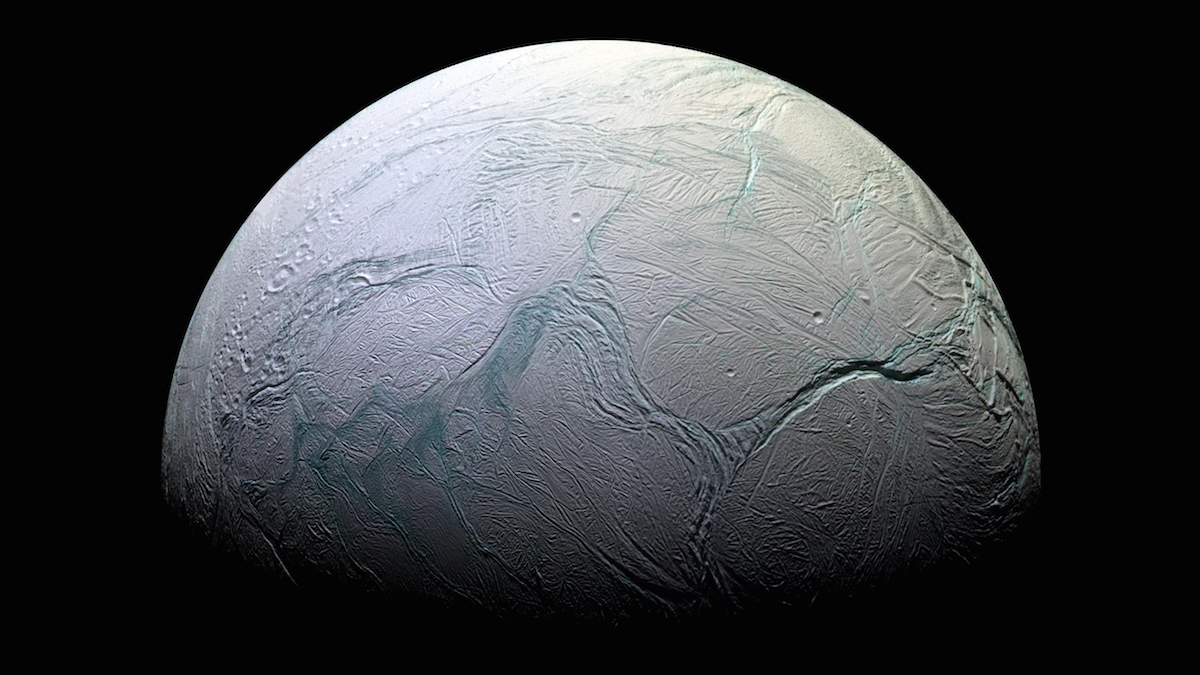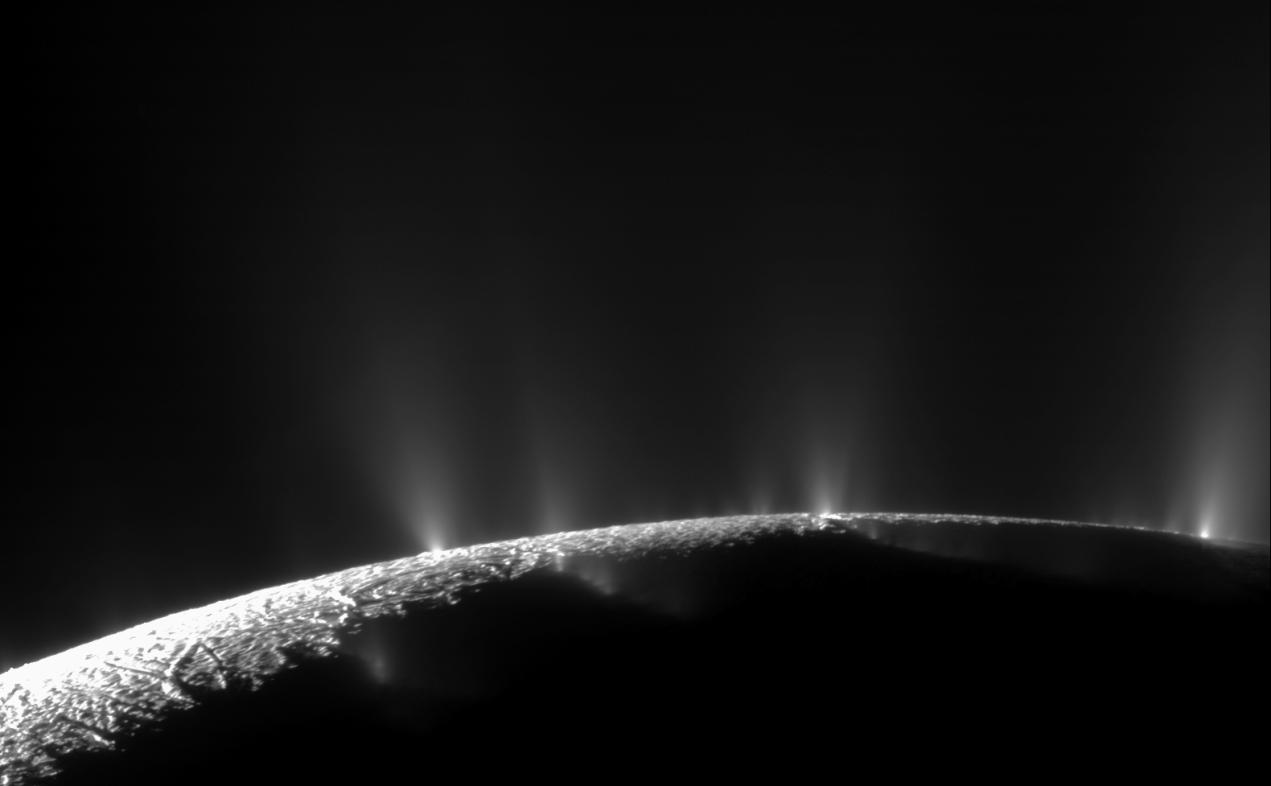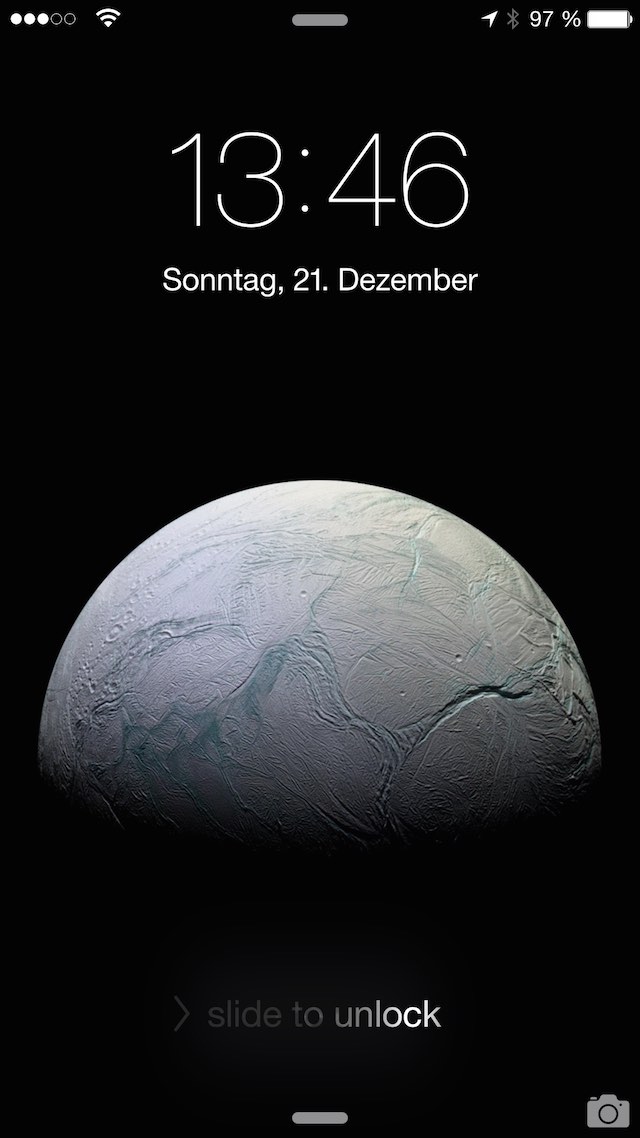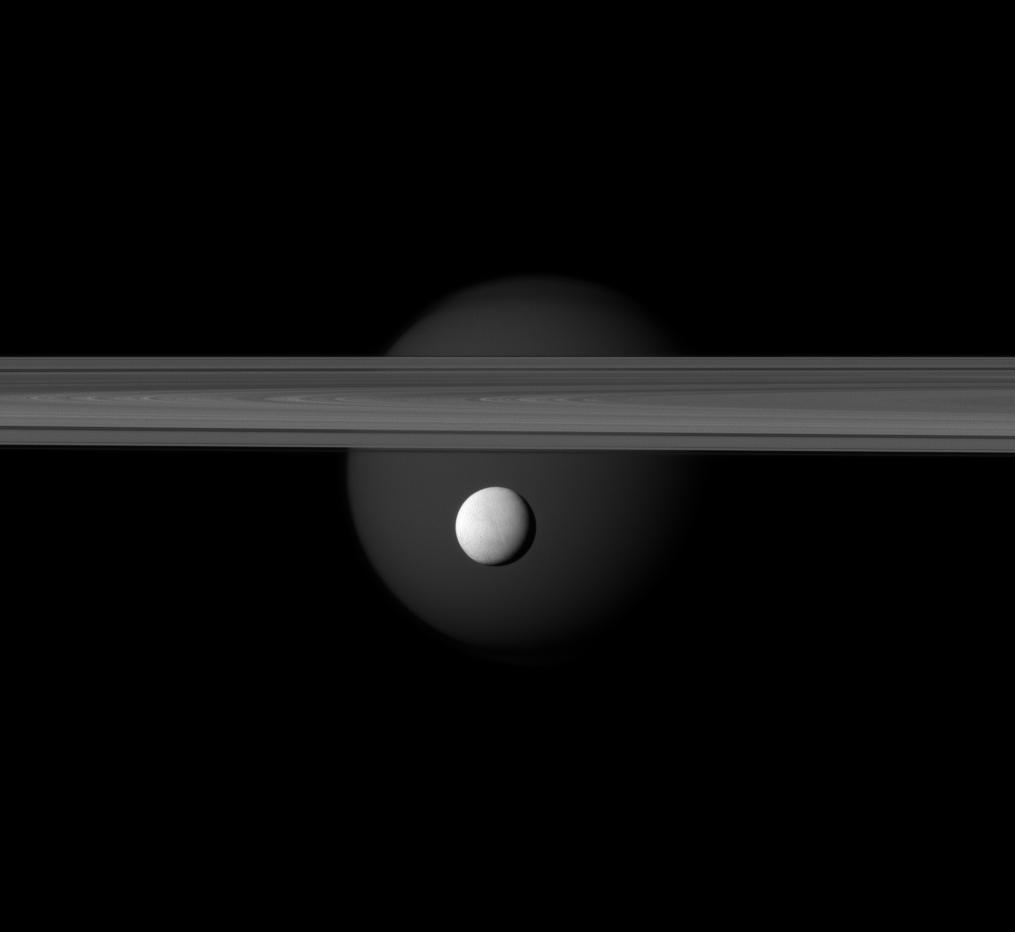Anxiety, a Robot and a Ball of Ice
2014-12-21

This image is my favourite photograph. It was taken by a robot, 1.6 billion kilometers away from Earth, and it helps me through the bad days.
It’s a false color (the blue parts ore not actually blue) image of Enceladus, the sixth largest moon of Saturn, located in the second outermost E Ring. It’s about 500km in diameter, roughly the distance from Berlin to Munich, tiny compared to Saturn’s other major moons. But it is an incredibly fascinating object.
It’s just a small ball of ice with a rocky core, but it does something very interesting:

It blasts out water into space from its south pole. It is not yet fully understood how it is heated to the point that it can maintain a subsurface liquid body of water but one heat source are the tidal forces of Saturn. Because Saturn’s gravitational pull is huge, it slightly deforms the moon during its elliptical orbit. This deformation heats up the ice inside Enceladus, builds up pressure and finally leads to something like geysers on Earth, but much, much larger. Some of the water falls back on the surface, keeping it smooth and making Enceladus the most reflective object in our solar systems and some of it remains in the E Ring.
So, this little ball of ice, that orbits a giant sphere of gas, 1.6 billion km away, is kneaded by gravity and slowly evaporates to form a new ring around Saturn. Right now. While we’re watching. It has been doing so for billions of years and it will continue for billions of years.
And nothing that I do or experience will ever have any effect on that.
Which brings me to what this has to do with anxiety, a problem that I still struggle with frequently. It has gotten a lot better over the past two years but there are still those days when even leaving home is a challenge and countless when everyday things are far more difficult than they should be.
By now I’ve mostly learned to do something against it before I stumble into a full grown anxiety attack. One of my tools in this is that photo of Enceladus. I look at it probably hundreds of times every day:

And every time I look at this photo, I am reminded of this fascinating thing that happens out there in space and how everything that may seem important to me is absolutely insignificant to it. Usually that has an immediate calming affect on me and it helps clearing my thoughts and to deal with difficult situations more rationally.
Some people find the thought of being totally insignificant in this universe disturbing. I find comfort in it, knowing that everything that happens in my life will only concern myself and a bunch of other people. But at some point none of that will matter. Even after I will have become old and died and everybody I knew will as well, Enceladus will still be blowing water into space.
Of course there’s far more impressive things going on in space, things that are much larger and much further away. But Enceladus with its 500km in size is something that I can clearly picture in my head. If I try to imagine a thing like VV Cephei, I can only do so in a very abstract way. These things are so absurdly big that they are beyond my visual imagination. Enceladus however is not. It’s small enough to fit in my imagination and also shows a complicated mechanic with it’s cryovolcanism that is just mind blowing on its own. It’s perfect for helping me put myself and my life into perspective.
“The Hitchhikers Guide to the Galaxy” features something similar: The Total Perspective Vortex, although that thing usually kills people with its effect. But just like reasonable doses of poisonous substances can be used as medicine, Enceladus is a small dose of the Total Perspective Vortex for me. And it helps tremendously.
